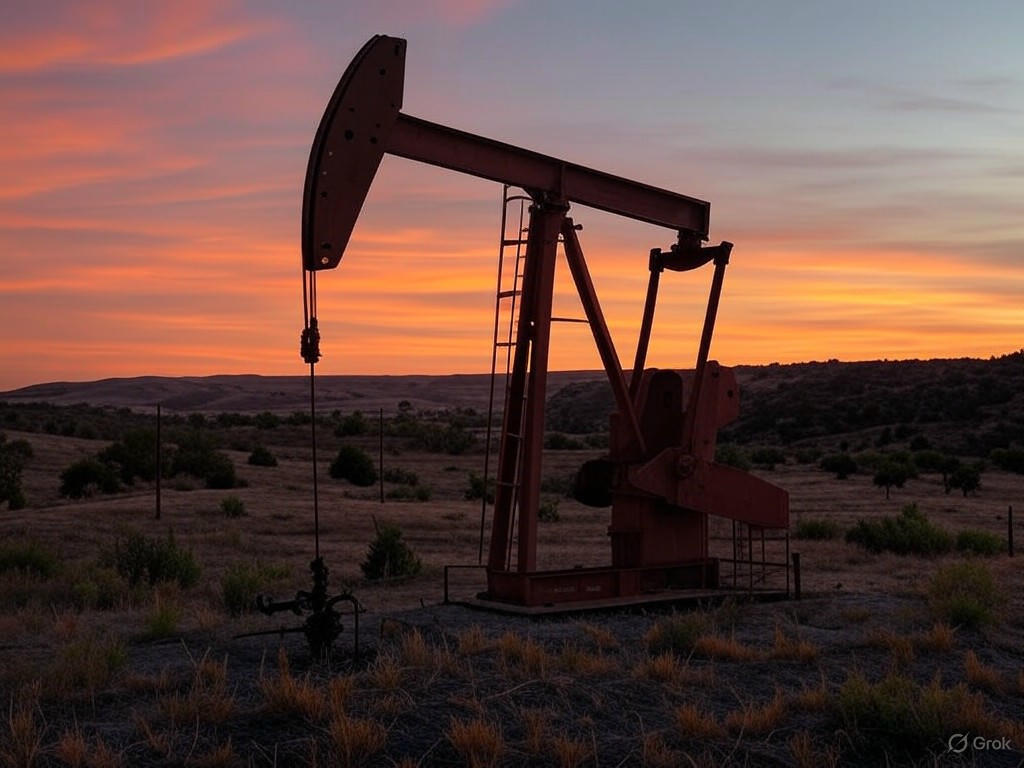U.S. Oil Production Faces Unexpected Decline, Challenging Energy Ambitions
The United States, long a powerhouse in global oil production, is bracing for a significant setback. Recent projections from the Energy Information Administration (EIA) indicate that U.S. oil output is on track for its first annual decline since the pandemic-hit year of 2020. This forecast, projecting a downturn by 2026, poses a direct challenge to the nation’s aspirations of achieving unparalleled energy dominance, a vision championed by political leaders like former President Donald Trump. The implications of this decline ripple beyond mere numbers, touching on economic stability, geopolitical influence, and domestic energy policies.
Several factors are converging to create this unexpected dip in production. First, the industry is grappling with the exhaustion of prime drilling locations in key shale regions like the Permian Basin. Years of aggressive extraction have depleted easily accessible reserves, forcing companies to target less productive or costlier sites. Additionally, oil firms are facing mounting pressure from investors to prioritize profitability over rapid expansion. This shift in focus has led to reduced capital spending on new projects, slowing the pace of drilling. Environmental regulations and the global push toward renewable energy are also playing a role, as some companies hesitate to commit to long-term fossil fuel investments amid uncertainty about future demand.
The broader economic context adds another layer of complexity. Fluctuating oil prices, driven by international supply dynamics and geopolitical tensions, have made long-term planning difficult for U.S. producers. While high prices in recent years spurred production, any softening in the market could further discourage investment. Moreover, labor shortages and supply chain disruptions continue to hamper operational efficiency, raising costs at a time when budgets are already strained. For a nation that has prided itself on energy independence, this projected decline raises questions about reliance on foreign oil and the vulnerability of domestic markets to global shocks.
Politically, the forecast is a blow to ambitions of cementing U.S. leadership in the energy sector. Energy dominance has been a rallying cry for policymakers who see oil and gas as not just economic drivers but also tools of national security. A shrinking output could weaken America’s bargaining power on the world stage, particularly in negotiations with OPEC and other major producers. At home, it may fuel debates over balancing energy exploration with environmental goals, as critics argue that over-reliance on fossil fuels is unsustainable in the face of climate change.
As 2026 approaches, the U.S. oil industry stands at a crossroads. Whether companies can innovate to overcome resource constraints or policymakers will pivot to bolster production remains to be seen. What is clear, however, is that the dream of unchallenged energy supremacy faces a stern test. This decline, though a setback, could serve as a catalyst for rethinking America’s energy future—perhaps accelerating the transition to sustainable alternatives or sparking a renewed focus on efficiency and resilience in traditional sectors. Only time will tell if this dip is a temporary stumble or a sign of deeper shifts on the horizon.


